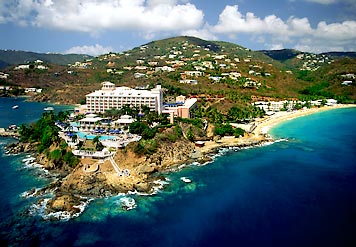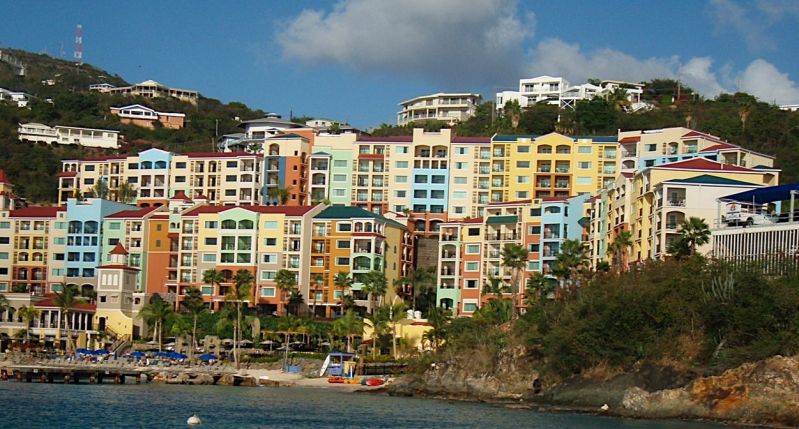St. Thomas, the busiest cruise-ship harbor in the West Indies, is not the largest of the U.S. Virgins -- St. Croix, 40 miles south, holds that distinction. But bustling Charlotte Amalie, at the heart of St. Thomas, is the capital of the U.S.V.I., and it remains the shopping hub of the Caribbean. The beaches on this island are renowned for their white sand and calm, turquoise waters, including the very best of them all, Magens Bay. National Geographic has rated the island as one of the top destinations in the world for sailing, scuba diving, and fishing.
Charlotte Amalie, with its white houses and bright red roofs glistening in the sun, is one of the most beautiful towns in the Caribbean. It's most famous for shopping, but the town is also filled with historic sights, like Fort Christian, an intriguing 17th-century building constructed by the Danes. The town's architecture reflects the island's culturally diverse past: You'll pass Dutch doors, Danish red-tile roofs, French iron grillwork, and Spanish-style patios.
However, thanks to St. Thomas's thriving commercial activity -- as well as its lingering drug and crime problems -- the island is often referred to as the most "unvirgin" of the Virgin Islands. Charlotte Amalie is heavily developed and Main Street is virtually a 3- to 4-block-long shopping center. Although this area tends to be overcrowded, the island's beaches, major hotels, most restaurants, and entertainment facilities are, to an extent, removed from the cruise-ship chaos. And you can always find seclusion at a hotel in more remote sections of the island.
St. Thomas has much to recommend it -- not only perfect sandy beaches but also the best dining in the islands and a string of the most upmarket resorts. But no one ever said St. Thomas was the friendliest of the Virgin Islands. It is, in fact, the unfriendliest -- a rather impersonal place overrun with cruise-ship passengers and locals who cast a rather cynical eye toward tourists. It can even be dangerous at night, especially on the back streets of Charlotte Amalie.
If you want to escape the masses, don't come here, as the rush-hour traffic in and out of Charlotte Amalie will reveal. If you're seeking something laid-back, with friendlier people, all you have to do is take the ferry over to St. John, and you'll enter a world that's more evocative of the sleepier 1950s. In short, St. Thomas is for those who want action.



